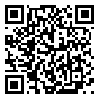BibTeX | RIS | EndNote | Medlars | ProCite | Reference Manager | RefWorks
Send citation to:
URL: http://rehabilitationj.uswr.ac.ir/article-1-877-en.html
2- Medical Sciences University of Rafsanjan ,
3- Medical Sciences University of Rafsanjan
Objective: Change in the brain structure with causes such as mental retardation, can alter hemisphere lateralization, especially if it takes place before completing the lateralization development. This research compares two important indices of lateralization including handedness and footedness among mental retarded and normal children and their parents. Four groups were compared to each other in order to showing the influence of mental retardation and family style in lateralization.
Materials & Methods: A cross-sectional study was carried out in second three month of 2008 by selecting 160 children (ranged between 7-13 years old) including 60 mental retarded students (IQ range from 50 to 70) were selected by random sampling and 100 normal children (IQ range 85-115) Were selected by cluster sampling. All participants with their parents completed 10 items of Edinbrough Handedness Inventory and Waterloo Footedness Questionnaire and Raven Progressive Matrices test. First Percent and confidence interval of each preference was presented then preferences of each group with chi-square test were compared.
Results: Amount of right footedness (RF) in fathers of normal children were 87% and their mothers were 86% and normal children were 84%.also amount of (RF) in fathers of mental retard children were71.6% and in their mother were 75% but (RF) in mental retard children were 50%. Amount of right handedness (RH) in fathers of normal children were 91% and in their mothers were 88% and in normal children were 87%. Also amount of (RH) in fathers of mental retard children were 88.3% and in their mother were 85.2% but (RH) in mental retard children were 66.7% . Chi square analysis revealed a significant difference between hand (P=0.013)and foot (P<0.001) preference among mental retarded and normal children, but this difference was not significant among their parents in both population. However Chi square analysis revealed A significant difference between hand (P=0.009) and foot (P=0.018) preference in mental retarded children and their parents.
Conclusion: Handedness and footedness can be changed by mental retardation so lateralization can be varied by MR.
Received: 10/08/2011 | Accepted: 29/12/2013 | Published: 29/12/2013
| Rights and permissions | |
 |
This work is licensed under a Creative Commons Attribution-NonCommercial 4.0 International License. |





